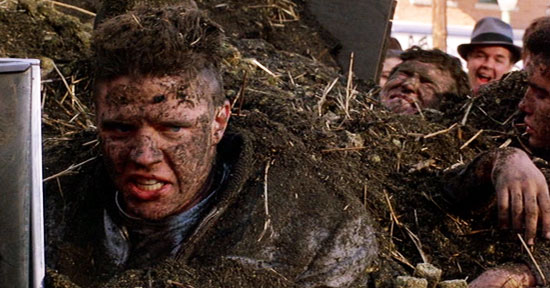
 |
|
#1271
|
||||
|
||||
|
Quote:

|
|
#1272
|
|||
|
|||
|
Quote:
I don't think any other spigots (if any) on the cylinder head have anything to do with the modification. Cheers! |
|
#1273
|
||||
|
||||
|
IvanK,
This was my reply to you on the buffet subject. I would encourage people to read that thread. Some good information and some good insight. Stability and control is just about my favorite subject when I was in school. It always amazed me how much of difference it makes in the outcome of an aircraft. you can have the best performance on paper that is unrealizable in the air, all due to stability and control issues. It was such a new thing during WWII, too. Quote:
I told you the truth. I was not disrespectful. I just backed up what I had to say and did not back down. It was not "technically correct but historically inaccurate". It was just correct. Is that like a new classification of information? Ha ha ha!! While this is correct, it is not historically correct, historically, they were wrong but right as I see it because technically they were not correct. All I said was this: Quote:
Quote:
Last edited by Crumpp; 04-24-2012 at 01:29 PM. |
|
#1274
|
||||
|
||||
|
Quote:
You are also right in the cylinder liners form the spigot on many engines. |
|
#1275
|
|||
|
|||
|
Quote:
Crumpp's conundrum Last edited by NZtyphoon; 04-25-2012 at 02:16 AM. |
|
#1276
|
|||
|
|||
|
[QUOTE=NZtyphoon;414492]Crumpp's conundrum
Well put... |
|
#1277
|
||||
|
||||
|
Quote:
|
|
#1278
|
|||
|
|||
|
Well I already contributed to re-derailing a many times derailed thread so I will persist
To me this seems an example of taking a correct technical fact and using it it go somewhere misleading. In a black and white world that would be impossible, but bear with me. Crumpp: Quote:
So why do historical military pilots and aerobatic pilots (not talking FBW here) seem to think flying at the onset of just detectable buffet a good idea? Are they all misguided and should be told the truth? Perhaps instead they know what they are doing and do it because it is a practical tool to stay as close as possible to the AoA for a maximum rate turn. In theory some turn performance is lost this way but there is no comparable signal to tell them how far they are under the optimum (so they can apply more pitch input). Of course the aircraft design plays a part in terms of buffet "depth"...if the aircraft departs very soon (with further pitch input) after the buffet onset is felt, or buffet was immediately "hard" it would not be a good idea to se this technique. Another technique would be to continuously detect flow separation, back off then redetect, but this doesn't seem very practical to me. But unfortunately I feel sick for hours after doing just an (approx) 2G turn for 360' so I don't know Of course a plane design that will take a maximum pilot stick deflection and apply exactly the optimum elevator deflection to achieve optimum AoA without any flow separation is good, but we need the microprocessor in avionics to get there I think. But to me that covers how context is important for technically correct "facts" to be useful in the discussion. Cheers, camber |
|
#1279
|
||||
|
||||
|
Quote:
1. If you don't have a stall warning device or AoA indicator then flying to the nibble and backing off is the correct technique. Read my last post in that thread and you will see once IvanK clarified his statement, we agreed. 2. See point #1 for most aerobatic aircraft. Quote:
You can read the Spitfire Mk I notes and see that it is in fact....correct.  Notice in paragraph 38 turning circle it instructs to not buffet the aircraft for a minimum radius turn and relax the stick pressure (move the stick forward)!! Quote:
The RAF republished sections as needed. That is a fact. The incorporated Amendment List was noted at the top of the reprinted section so that the operator could confirm he had the latest updates. For example, the Hurricane II Volume I shown here incorporates Amendment List Number 42:  The amendment list's that are published but not incorporated are the responsibility of the operator to add to the Operating Notes. Those amendments are to be logged in the space provided at the front of the Operating Notes:  To complete the update, the operator is instructed to paste in and replace the old text with the changes noted in the Amendment. Here you can see that an amendment was properly added to the Operating Notes by the Operator:  Quote:
That being said, I can also tell you for a fact ALL Spitfire Mk II's were using 100 Octane in June of 1940. |
|
#1280
|
||||
|
||||
|
BTW, the RAF does the same with their Operating Notes that the FAA requires of any certified General Aviation Aircraft in use today.
It is what was agreed upon by convention!! |
 |
|
|